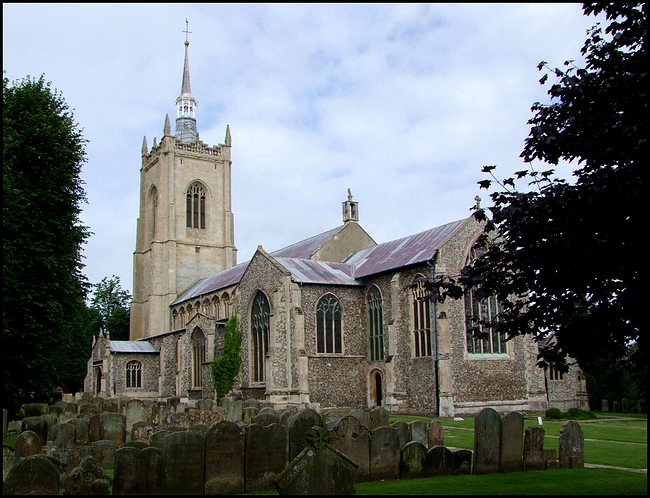
Navigation / Home / Family History / DNA Project / Photos / Stories / Gravestones / Back to Coat of Arms
Church of St. Peter & St. Paul, Swaffham, Norfolk, England

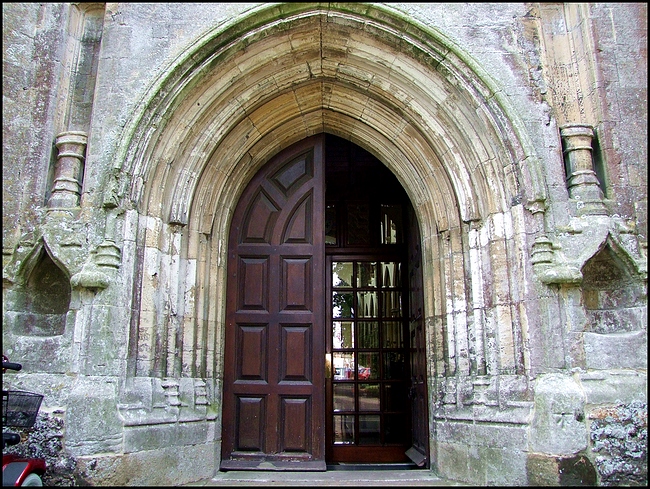
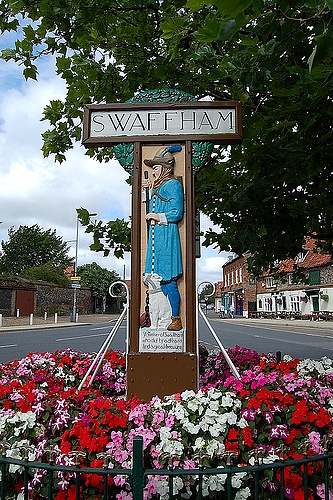
Swaffham is an elegant market town in Norfolk which has a history dating back to the time of the Vikings. To the west of the existing market place is a large rock reputed to have been placed there by the Vikings as a town marker. The market place has Georgian buildings and a domed rotunda from when Swaffham was a fashionable place in Georgian times.
Market day in Swaffham is on a Saturday and this lovely town becomes a bustling hive of activity.
The town sign, on the edge of the market place depicts the legendary Pedlar of Swaffham who is also commemorated in the Church of St Peter & St Paul.
We're not sure when the church was founded. As the manor of Swaffham was already an important settlement held by Harold Godwinson (later the illfated King Harold who became a cropper at Hastings) during Saxon times it is likely some place of worship was necessary. If so, it left little trace of its existence. Swaffham grew in importance as a crossroads on the routes from east to west and north to south through Norfolk. The current church was first mentioned in official records during the reign of Henry II when a rector was appointed during the mid 12th century. Richard de Wichford was the first recorded vicar, being appointed to the job in 1299. The church's income was estimated at L80 per year in 1280, about as much as the whole manor of Swaffham was valued at, so it was clearly a substantial living. Quite what this 13th and 14th century church looked like we don't know but when the roof caved in - literally - it had to be rebuilt at vast expense. The current Church of St Peter and St Paul was begun in 1454, and it took nearly half a century to complete, and the tower was added only in 1510. Set at an angle from the town's bustling market place, but hidden from the road, it was built in the traditional perpendicular style. At 51ft (15m) wide and about 51ft in height from the nave, the proportions of the church give it a roomy feel, and this extended height allows plenty of light in. Rated as one of the outstanding late medieval churches in this region, it is today visited by people from all over the world.
The story goes that a Swaffham pedlar called John Chapman had a dream. If he went to London Bridge he would come across a man who would make his fortune. Encouraged by this vivid vision, Chapman travelled down to London accompanied by his dog. On the bridge, at that time covered in shops and people's houses, he told a shopkeeper about his dream. The Londoner laughingly replied: "If I took any notice of dreams I would be as big a fool as you. Why, I dreamt that in Norfolk at a place called Swaffham lived a pedlar named Chapman. In his garden was a tree, and buried under it a pot of gold." Without another word quick-witted Chapman hot-footed it back home - and sure enough dug up a brass pot full of gold coins under his apple tree. As a bonus the pot carried a Latin inscription, reading "underneath this pot is one which is twice as good". After it was translated for him by a passing monk Chapman dug this up too. Now a wealthy man, he made a splash in his home town.
Whatever the truth of the legend, versions of which are told in other towns, a John Chapman definitely existed, and was a successful Swaffham businessman during the mid 15th century. From 1435 to 1474, John Botwright was rector of Swaffham, and compiled the Swaffham Black Book. This was an invaluable record of all the work done on the rebuilding of the church. From the entries it can be seen that churchwarden John Chapman paid for the rebuilding of the north aisle, where his family pews were, along with other generous gifts. His help must have been very welcome; for a small market town, having to bear the cost of rebuilding such a large church must have been a daunting prospect, and would have had to be borne locally or not at all. Chapman is remembered by carved effigies of him on two front pews depicting him with his pack on his back along with his dog, and another of a woman looking over the door of a shop. The pedlar had made his fortune quite spectacularly.
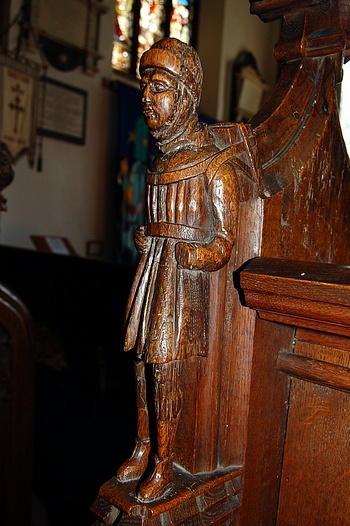
Apart from the original building's collapse in the 15th century, the church has escaped the usual natural disasters of fire and storms. Like most churches in East Anglia, however, St Peter and Paul did not escape the attentions of Puritan image-breakers during the Civil War. During roof restoration in the late 19th century many small bullets were found embedded in some of the 88 carved angels that decorate the ceiling as part of the hammerbeam roof. Apparently these had been fired by some of Oliver Cromwell's men as they tried to destroy what they saw as idolatrous papist symbols. The plateglass windows we see today are 19th century creations; no doubt the Puritans destroyed the originals. Another reminder of Cromwell is the memorial in the Lady Chapel to his maternal grandmother, Catherine Steward, who came from Swaffham and died in 1590.
You enter the church through the fabulous west doorway, surely one of the grandest entrances to any Norfolk church, and the sheer bulk of the building spreads out before you. This is a church which seems larger inside than out. The space is topped off by a breathtaking late medieval angel roof, which is said to be chestnut.
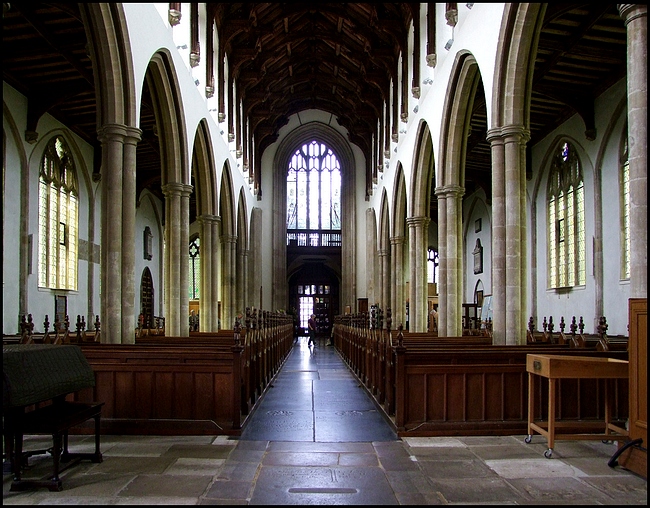
The Church is a large and handsome pile of freestone, brick, and flint, commenced about the reign of Edward IV., but not finished till 1510. It is in the form of a cross, having a chancel, nave, aisles, transepts, and a lofty well-proportioned tower, terminated by enriched embrasures and purfled pinnacles, and containing eight musical bells and a good clock. The nave is very loft, having 26 cleristory windows; and its inner roof is ornamented with a profusion of carved wood figures of angels, and supported by slender clustered pillars, from which spring 14 pointed arches, seven on each side. Here are many handsome monuments, and in the windows are some remains of beautiful stained glass, supposed to represent the benefactors who contributed towards rebuilding the church.
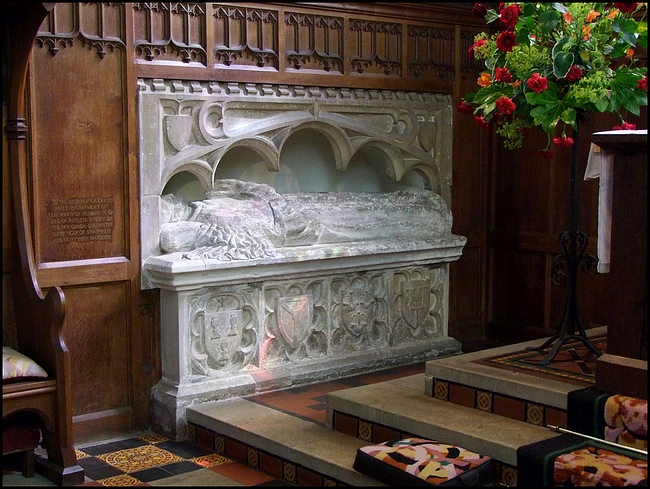
Among the monuments is an altar-tomb, with the effigy of John Botwright, D.D., who was master of Corpus Christi College, Cambridge, chaplain to Henry VI., and vicar of this church, when it was rebuilt.
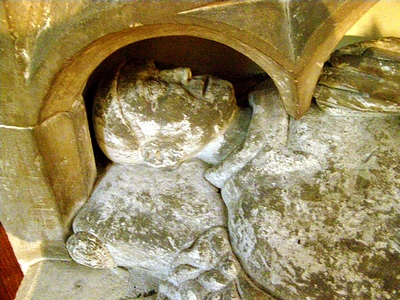
His office, faith, and name are shewn by rebusses on four shields, - an hieroglyphical mode of expression which was practiced among the Greeks and Romans, and is mentioned in the time of Homer. The first of the four shields has three sacramental cups and wafers to represent his office and priesthood; the second shield has the emblem of the Trinity to express his relationship to the College, it being a part of the arms belonging to it; a third shield bears three boats, or barges, and a fourth shield has three wimbles, or augurs, and is an allusion to his name.
From Jason Boatright:
Our ancestor, Jon Botwright, had a dry sense of humor: he labeled his "Black Book
of Swaffham" - which is an account of the state of the church, of which he was
rector - a "navicula recta," which in Latin means, "right little ship." In other
words, he called his tidy account of his ship-shape church "boatright." Being a
commoner who became very important, he invented a coat of arms that was a play on
his surname; he was just the kind of man who would poke-fun at himself in a public,
permanent, and official sort-of-way.
last modified: September 27, 2009
URL: http://www.boatwrightgenealogy.com
Navigation / Home / Family History / DNA Project / Photos / Stories / Gravestones / Back to Coat of Arms